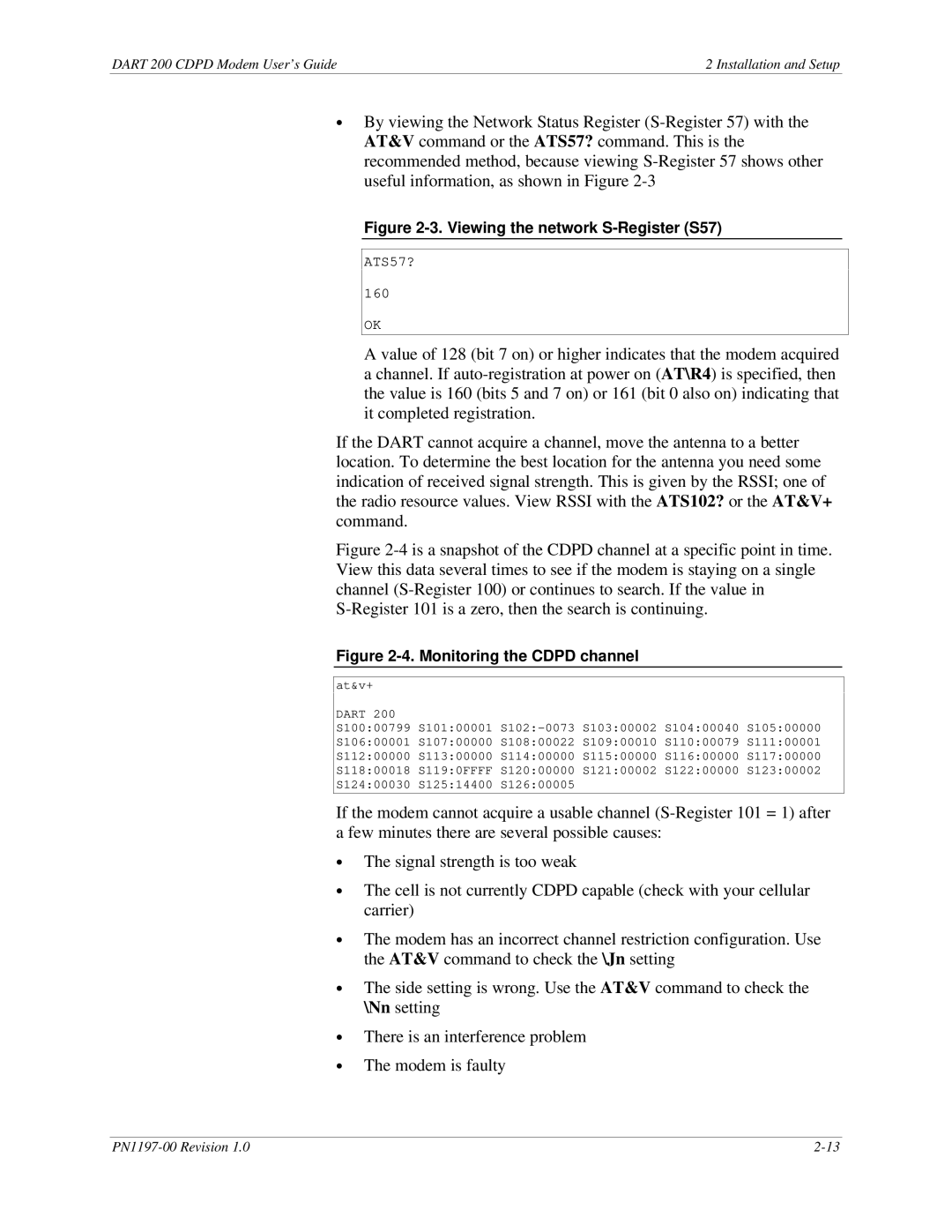
DART 200 CDPD Modem User’s Guide | 2 Installation and Setup |
∙By viewing the Network Status Register
Figure 2-3. Viewing the network S-Register (S57)
ATS57?
160
OK
A value of 128 (bit 7 on) or higher indicates that the modem acquired a channel. If
If the DART cannot acquire a channel, move the antenna to a better location. To determine the best location for the antenna you need some indication of received signal strength. This is given by the RSSI; one of the radio resource values. View RSSI with the ATS102? or the AT&V+ command.
Figure 2-4 is a snapshot of the CDPD channel at a specific point in time. View this data several times to see if the modem is staying on a single channel (S-Register 100) or continues to search. If the value in S-Register 101 is a zero, then the search is continuing.
Figure 2-4. Monitoring the CDPD channel
at&v+
DART 200
S100:00799 S101:00001
S106:00001 | S107:00000 | S108:00022 | S109:00010 | S110:00079 | S111:00001 |
S112:00000 | S113:00000 | S114:00000 | S115:00000 | S116:00000 | S117:00000 |
S118:00018 S119:0FFFF S120:00000 S121:00002 S122:00000 S123:00002 | |||||
S124:00030 | S125:14400 | S126:00005 |
|
|
|
If the modem cannot acquire a usable channel
∙The signal strength is too weak
∙The cell is not currently CDPD capable (check with your cellular carrier)
∙The modem has an incorrect channel restriction configuration. Use the AT&V command to check the \Jn setting
∙The side setting is wrong. Use the AT&V command to check the \Nn setting
∙There is an interference problem
∙The modem is faulty
